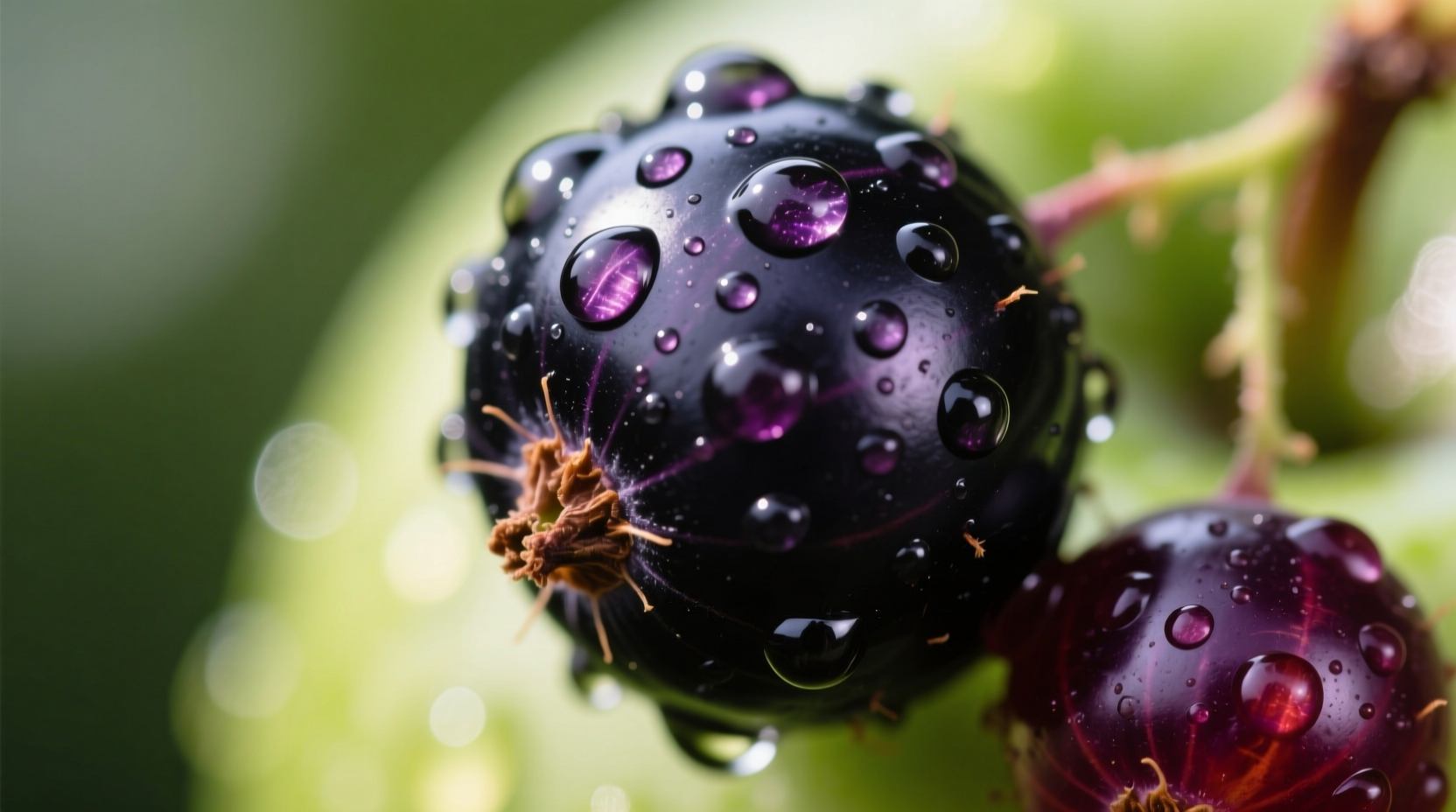Ever wondered whether those deep purple berries in your local market will make your taste buds dance or wince? Understanding black currant flavor unlocks culinary possibilities from elegant desserts to sophisticated cocktails. This guide reveals exactly what to expect when you bite into these nutrient-packed berries and how to use their unique flavor profile to elevate your cooking.
The Distinctive Flavor Profile of Black Currants
Black currants (Ribes nigrum) offer one of the most complex flavor experiences among edible berries. Unlike their sweeter cousins, these small, dark berries deliver an immediate burst of tartness that gradually reveals underlying sweetness and aromatic complexity.
When perfectly ripe, black currants showcase:
- Intense tartness - Higher acidity than most berries, similar to cranberries but with more complexity
- Subtle sweetness - Noticeable only after the initial tart punch, about 1/3 less sugar than blueberries
- Earthy undertones - A distinctive forest-floor quality that sets them apart
- Floral notes - Hints of rose and violet that become more pronounced in processed forms
- Musky aroma - Often described as "wild" or "gamey" compared to cultivated berries

How Ripeness Changes Black Currant Flavor
The taste of black currants transforms dramatically as they ripen. Understanding these stages helps you select berries perfect for your intended use:
| Ripeness Stage | Taste Characteristics | Best Culinary Uses |
|---|---|---|
| Underripe (green/pink) | Extremely tart, almost bitter, minimal sweetness | Vinegars, shrubs, or as a natural pectin source |
| Mid-ripeness (deep purple) | Balanced tartness with emerging sweetness, pronounced floral notes | Jams, syrups, baked goods where tartness is desired |
| Full ripeness (almost black) | Maximum sweetness while retaining characteristic tartness, complex aroma | Fresh eating, desserts, premium liqueurs |
Black Currants vs. Other Berries: A Flavor Comparison
Many people confuse black currants with similar-looking berries, but their flavor profile stands apart. Here's how they compare to common alternatives:
- Black currants vs. blueberries: Black currants are significantly more tart with earthier notes, while blueberries offer consistent sweetness and milder flavor
- Black currants vs. blackberries: Blackberries have a more straightforward sweet-tart profile with herbal notes, while black currants feature distinctive floral and musky elements
- Black currants vs. red currants: Red currants are brighter and more acidic with less complexity, while black currants offer deeper, more rounded flavor
- Black currants vs. elderberries: Elderberries have a more medicinal taste with less acidity, while black currants provide cleaner tartness with floral notes
Why Black Currants Taste Different in Processed Forms
You might notice black currants taste different in jams, juices, or liqueurs compared to fresh berries. This transformation happens because:
The key compound responsible for black currants' distinctive flavor is cassisone, which becomes more pronounced when berries are processed. According to research published in the Journal of Agricultural and Food Chemistry, heating black currants releases additional aromatic compounds that weren't detectable in raw berries (source).
This explains why:
- Jams and preserves showcase more floral notes than fresh berries
- Black currant liqueur (crème de cassis) has a sweeter, more rounded profile
- Dried black currants develop concentrated tartness with chewy texture
- Frozen berries maintain more tartness than fresh when thawed
Practical Tips for Using Black Currants in Your Kitchen
Understanding black currant flavor helps you use them effectively in recipes. Consider these practical applications based on their distinctive taste profile:
Sweetening Strategies for Black Currants
Because of their natural tartness, black currants often need sweetening. The best approach depends on your desired outcome:
- For fresh applications: Macerate with sugar (1:4 ratio) for 30 minutes to draw out juices while preserving texture
- For baking: Increase sugar by 25% compared to blueberry recipes
- For sauces: Simmer with honey or maple syrup, which complement the earthy notes better than plain sugar
Ideal Flavor Pairings
Black currants' complex profile works beautifully with specific companions:
- Dairy: Balances tartness (yogurt, cream, mascarpone)
- Citrus: Complements acidity (orange zest works particularly well)
- Warm spices: Cinnamon and vanilla enhance the berry's natural sweetness
- Herbs: Mint or basil provide refreshing contrast to the earthiness
Where to Find Authentic Black Currant Flavor
Due to historical agricultural restrictions, authentic black currant products can be challenging to find in some regions. In the United States, commercial cultivation was banned in many states until 2003 due to concerns about white pine blister rust, which explains why European products often showcase more authentic flavor profiles.
The USDA Agricultural Research Service notes that newer varieties developed after the ban's lifting have improved flavor profiles while maintaining disease resistance (source).
Common Questions About Black Currant Taste
Are black currants supposed to taste bitter?
Ripe black currants shouldn't be bitter—they should have a balanced tartness with subtle sweetness. Bitterness usually indicates underripeness or overprocessing. The characteristic earthy notes might be mistaken for bitterness by those unfamiliar with the flavor profile.
Why do black currants taste different in juice versus fresh?
Processing releases additional aromatic compounds, particularly cassisone, which enhances the floral notes. Heat treatment during juicing also converts some tart compounds into sweeter ones, creating a more rounded flavor profile than fresh berries.
How does black currant flavor compare to elderberry?
Black currants have brighter acidity and more pronounced floral notes compared to elderberries' deeper, more medicinal flavor. Elderberries lack the distinctive musky aroma of black currants and contain more tannins, giving them a drier mouthfeel.
Do black currants taste the same as they appear in crème de cassis?
No—crème de cassis has a sweeter, more rounded profile because sugar and alcohol extraction enhance the floral notes while mellowing the tartness. The distinctive earthy undertones become more subtle in the liqueur form.
Why do some people say black currants taste like cat urine?
This uncommon perception comes from a compound called 4-methylpentanoic acid, which some people detect at low thresholds. Genetic differences in taste receptors explain why only certain individuals experience this association, similar to how cilantro tastes soapy to some people.











 浙公网安备
33010002000092号
浙公网安备
33010002000092号 浙B2-20120091-4
浙B2-20120091-4